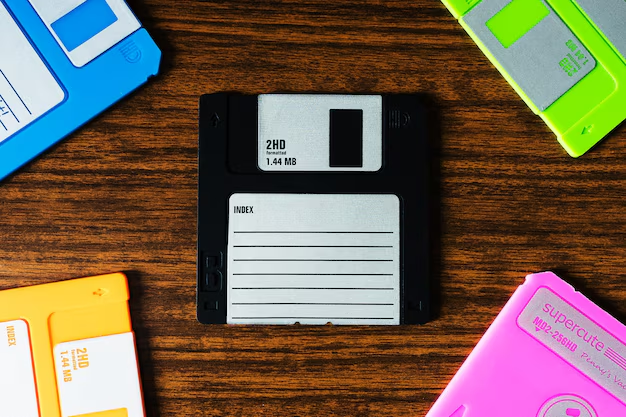Preserve Your Memories: How to Transfer VHS to DVD
Do you have a collection of old VHS tapes gathering dust at the back of a closet, capturing precious memories, family events, or perhaps classic movies? As technology evolves, preserving these memories in a durable, space-efficient format becomes a priority. It’s time to breathe new life into your cherished footage by transferring VHS to DVD. Let’s dive into the why and how of this essential process.
📼 Why Transfer VHS to DVD?
VHS tapes aren’t known for their longevity. The magnetic tape inside a VHS cassette can degrade over time, leading to loss of video quality or even tape breakage. Here are some compelling reasons to consider:
- Longevity: DVDs last longer when stored properly, retaining video quality far better than VHS tapes.
- Space Efficiency: Reclaim storage space with slim DVDs instead of bulkier VHS tapes.
- Ease of Access: DVDs allow for more straightforward navigation compared to tape winding.
- Digital Conversion: Once on DVD, your footage is easier to convert further to digital formats for editing or sharing online.
Getting Started: Assess Your Needs
Before embarking on this process, evaluate the quantity and significance of your tapes. Here are some guiding questions:
- How many tapes do you have?
- Are these tapes of personal importance or rare films?
- Is the cost of equipment and time investment worth it to you?
Understanding your needs helps chart the best approach.
🎥 Essential Equipment for VHS to DVD Conversion
Capture Device
To transfer VHS to DVD, you’ll need a method to capture the video and audio from the VHS tape. Consider the following options:
- VCR Player: Essential for playing back the tapes.
- Video Capture Card or Device: Transfers video to your computer. These come in USB forms that plug into your PC.
- A PC or Laptop: Where the capturing and processing will take place.
- DVD Burner: Either an external one connected to your computer or an internal drive that supports DVD burning.
Software
You'll also need software to manage the video capture and DVD burning process. Some software options include:
- Roxio: Popular for ease of use.
- Adobe Premiere Elements: Great if you want editing features.
- VLC Media Player: Can serve for basic capture tasks.
Step-by-Step Guide to Transfer VHS to DVD
Step 1: Set Up Your Equipment
- Connect Your Devices: Link your VCR to the computer using the video capture device. Connect RCA cables from the VCR’s output ports to the input ports on the capture device.
- Install Software: Ensure your video capture software is installed and ready to go.
Step 2: Capture VHS Footage
- Open Software: Launch your video capture software.
- Play the Tape: Hit play on your VCR. Your software should start displaying the VHS playback on your computer.
- Start Recording: Begin recording the footage. Ensure to capture everything you wish to save.
- Monitor Quality: Check the video quality periodically to prevent errors.
Step 3: Edit (Optional)
- Add Titles: Enhance the viewing experience by adding titles or transitions.
- Cut Unnecessary Parts: Trim any boring or unnecessary sections to fit your storytelling if necessary.
Step 4: Burn to DVD
- Prepare the Disc: Insert a blank DVD into your computer’s disc drive.
- Choose Burn Settings: Select the appropriate video format (usually MPEG-2 for DVDs).
- Start Burning: Watch the process to ensure everything goes smoothly.
DIY vs. Professional Service
DIY Conversion
Pros:
- More control over editing and creative processes.
- Potentially more cost-effective, especially if you already own some equipment.
Cons:
- Can be tech-intensive for beginners.
- Requires time and patience.
Professional Services
If the DIY route seems daunting or if you have a large collection, consider professional services:
Pros:
- Convenient and time-saving.
- Specialists handle delicate tapes carefully.
- Usually includes enhancements like minimizing noise or vibrant color correction.
Cons:
- Can get expensive.
- Less control over content editing.
Potential Challenges and Solutions
Transferring VHS tapes may present some hurdles. Here’s how to tackle common issues:
- Old or Damaged Tapes: Sometimes, tapes might suffer from degradation. Prioritize these for transfer first.
- Audio Issues: If audio is choppy, make sure connections are secure or consider using audio editing tools to enhance sound.
- Lack of Equipment: Consider borrowing from friends or checking second-hand options to curb costs.
📝 Quick Summary: Steps & Tips
- Equipment: VCR, capture device, PC, DVD burner.
- Software: Roxio or Adobe Premiere Elements.
- Steps:
- Set up equipment.
- Capture footage.
- Edit footage (optional).
- Burn to DVD.
- Consider Professional Services for large collections.
Final Thoughts
Transferring VHS to DVD maintains the integrity of your cherished memories while utilizing modern technology's advantages. Whether you choose the DIY route or professional services, the reward of preserving and sharing your favorite memories or film collections is invaluable. Dive in and embark on this rewarding endeavor today!

Related Topics
- How Can I Transfer Data From One Laptop To Another
- How Can I Transfer Domain To Godaddy
- How Can I Transfer My Calls To Another Phone
- How Can I Transfer Pdf To Word
- How Can We Transfer Data From One Laptop To Another
- How Can You Transfer Data From One Phone To Another
- How Can You Transfer Emails From One Account To Another
- How Can You Transfer Vhs Tapes To Dvd
- How Do I Transfer a Prescription From Walgreens To Cvs
- How Do I Transfer Data From Ipad To Ipad